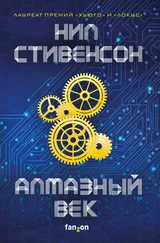“Oh, that’s no problem then!” said his grandmother.
There had been some concern that spinning rotors might injure the birds’ talons. Piet, like Tsolmon, wasn’t much of a conversationalist, but it was easy to draw him out on this topic. He encouraged Rufus to reach out and grab Skippy’s perch and compare the size of his hand to the eagle’s foot. If you included the long curving talons, the bird’s digits were as long as Rufus’s fingers.
Not that Rufus would have relished shoving his hand into the rotors of a drone in flight. The blades of those things were extremely lightweight, but they spun quickly. They didn’t pack enough of a punch to break a finger, but they could draw blood, and the impact hurt.
He now perceived an opportunity to be of service. Actually wrangling eagles was not a thing that he was ever going to learn. It was a whole world of fussy veterinary procedures, weird social man/bird interaction, and messing around with small dead raw animals that did not appeal to him and that he never would have become good at. Even if he were to somehow master all those skills, the fact was that the eagles they actually had at the Marble Mine had all bonded with specific human beings who were not Rufus.
But if the goal of this Special Project was to reboot the canceled Schiphol Airport Eagle vs. Drone project, then there were ways he could be of service. First of all by building practice drones, the sole purpose of which was to be ripped out of the air by eagles, using rotors with pivoting blades that would be less likely to damage the feet of an attacking eagle. These would make it possible for the falconers to train their eagles safely.
In actual practice, though, it wouldn’t make sense to assume that the bad guys—whoever they might be—would be so considerate as to build eagle-friendly equipment. So the second part of Rufus’s work was to construct eagle gauntlets: lightweight, hard-shelled gloves, like those on a suit of medieval armor, that could be slipped over the birds’ feet and lower legs to take the impact from spinning drone rotors. Once those had brought the lightweight blades to a dead stop, the eagles’ talons could close in around the body of the drone, the three front toes raking it back so that the hallux—the huge talon on the bird’s “heel”—could close in, crushing and piercing the drone’s hull just like the rib cage of a hapless bunny.
In the era before 3D printers, inventing eagle gauntlets would have been difficult, but now it was easy. Better yet, it gave him an excuse to purchase a fancier 3D printer that was capable of making stronger, lighter parts. Rufus was gradually getting clued in to the fact that dudes like T.R. actually liked it when you spent money, provided you did it within reasonable bounds. It proved that you were doing something.
In other words, he dropped, or at least set to one side, the pretense that he was actually patrolling the airspace of the Flying S Ranch with a personal fleet of drones and threw himself full-time into helping Thordis, Carmelita, Tsolmon, and Piet train their eagles. In military parlance, they were the Blue Team, preparing to defend the ranch against possible invaders, and he was the Red Team—a simulated opponent that the Blue Team could train against. And since all of them called him by his nickname of Red, it all seemed to fit. It gave him a story he could tell himself, as he sat down there in the cool recesses of the marble mine repairing drones torn apart by enraged birds of prey, as to why this all made sense. A story he could also relate to T.R., if T.R. ever asked. But he never did.
CYBERABAD
We think you are ready to walk,” said Dr. Banerjee after they’d extracted him from the tank, removed the sphere from his head, disconnected the cables behind his ears, and given him a chance to shower and put some clothes on.
When he’d first regained consciousness, “clothes” had meant hospital gowns, but these days it seemed to be T-shirts, sweatpants, and a simple piece of cloth to cover his head. He never wore the same T-shirt twice. They just showed up. Most were blazoned with the names and logos of kabaddi teams, but there was also some hockey swag. He had only the vaguest sense of what kabaddi and hockey were, but their practitioners seemed quite generous with clothing.
As for the piece of cloth on his head: in the early going he’d been a little unclear on whether this was a medical thing—for they’d been doing a lot of things to his skull—or a form of attire. Some of the people who came to visit him—including most of the ones who claimed to be his friends and family—wore such coverings on their heads. Typically, they were a lot more elaborate than the thing he had . Large portions of his head had been shaved for medical reasons, but they’d left his hair long on top and in front. He could twist it into a sort of bun above his forehead and wrap that up in the cloth. Also, there was a metal band that he wore on his wrist.
Right now he was seated in a wheelchair in the living room of his suite, looking across a coffee table at Dr. Banerjee, a small woman in her forties. She was flanked by a couple of the usual crowd of—well, it was hard to tell who and what they were. Younger people who seemed smart and efficient and pleased.
“I’ve been walking for weeks,” he said.
“I mean, without the rack,” she clarified. She referred to a cube-shaped frame on wheels that until now had always surrounded him when he walked; it prevented him from injuring himself when he lost his balance. “Today’s results were more than encouraging. Your proprioception has been improving steadily during the last few weeks, but recently it has just gone shooting off the charts. We have finally got those darned gyros dialed in. The neural interfaces are ‘taking.’ Combining those two advances, we can now say that your sense of balance is better than what we have measured in controlled experiments on Olympic gymnasts!”
“Well, screw it then,” he said. In one motion he unbuckled the lap belt holding him into his chair and stood up. The backs of his legs impacted the chair and sent it rolling backward until it clattered against a wall. Dr. Banerjee was horrified. She needn’t have been. He knew exactly where he was in space.
“No, too soon, Laks!” she exclaimed.
Laks. Yet another of his names.
“Please sit down! We wish to perform the trial under controlled circumstances!” Dr. Banerjee herself had jumped to her feet as if to physically restrain him—funny thought, since she weighed less than half of what Laks did. His lack of balance had not prevented him from working out on weight machines to gain back the muscle mass he’d lost during the months of lying unconscious.
Her colleagues, though, looked very pleased. They high-fived each other. One of them took a picture.
“Can you do this?” Laks asked. He lifted one foot off the floor so that he was balanced on one leg. Then he closed his eyes. “Count,” he said.
One of them began: “One Mississippi, two Mississippi, three . . .”
When the count reached thirty, he opened his eyes. Rock solid. No flailing of arms or hopping around.
“I cannot,” Dr. Banerjee admitted. “Few can.”
During the half minute he’d been standing on one leg with eyes closed, that “Laks” thing had been sinking in. It jogged a memory—a recent one. He walked over to the floor-to-ceiling window of his suite. This was on something like the thirtieth floor of the building, so it had a fantastic view out over a sunlit cityscape consisting mostly of new office buildings ranging in height from five to fifty stories. Some were emblazoned with logos and funny words that he took to be the names of companies. The place was called Cyberabad. It was part of a much larger and older city called Hyderabad. These were all details he had picked up in fragments strewn among conversations he barely remembered, scattered across the last several weeks; but it was all coming into focus. It was beginning to “take,” to borrow Dr. Banerjee’s expression.
Читать дальше
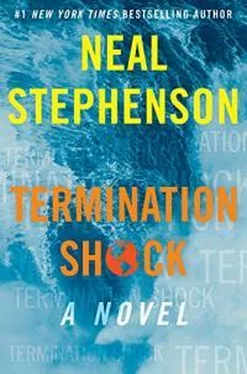
![Нил Стивенсон - Криптономикон [litres]](/books/23868/nil-stivenson-kriptonomikon-litres-thumb.webp)
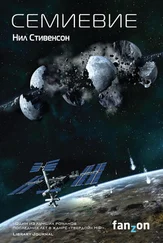
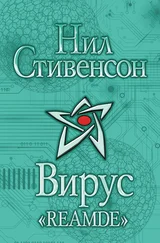




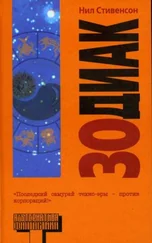

![Нил Стивенсон - Лавина [litres с оптимизированной обложкой]](/books/414066/nil-stivenson-lavina-litres-s-optimizirovannoj-ob-thumb.webp)
